Khayer Lake Trek Location
The Khayer Lake Trek is located northwest of Pokhara City, situated in the Annapurna region of Nepal within the Annapurna Conservation Area. This protected area is the largest conservation area in Nepal and encompasses a variety of ecosystems, landscapes, and cultural diversity. The trek usually starts from Nayapul, which is about a 1 to 1.5-hour drive from Pokhara. The trek culminates at Khayer Lake, a stunning glacial lake situated at the base of Annapurna South after reaching the Khopra ridge.
This trek is a more remote and less-traveled alternative to some of the more popular treks in the region, such as the Annapurna Circuit or the Ghorepani Poon Hill Trek. It takes you through pristine forests, traditional villages, and rugged landscapes, offering a unique and rewarding trekking experience away from the crowds.
Information of Annapurna Conservation Area Project
Annapurna Conservation Area project (ACAP) is largest conservation area of Nepal and located in north center in Nepal. It has 7629 square Km and established in 2049 B.S. (1992 A.D.). It is bounded by the mustang in the north, Kali Gandaki River in the west, Marsyandi valley in the east and Pokhara valley is the south border.
This project was initiated by National Trust for Nature Conservation (the king Mahendra Trust for Nature Conservation) a non- government organization and donate by many international trusts. Nowadays, this project conserved by National Trust for Nature Conservation (NTNC) and local people community from local area. The head quarter of this ACAP is Ghandruk.
Best time to Visit Khayer Lake Trek
The best time to visit the Khayer Lake trek is during the two main trekking seasons namely spring and autumn season in Nepal. These two seasons offer the most favorable weather and spectacular views, making your trekking experience enjoyable and memorable.
- Spring season (March to May):
Spring is the best time for the Khayer Lake Trek. During this season, the weather is generally stable, with mild temperatures during the day and clear skies, providing excellent visibility of the surrounding mountains. The trekking trail is decorated with vibrant rhododendron blooms, creating a colorful and picturesque landscape. The temperatures are pleasant, making it a comfortable time for hiking and the days are longer, allowing for more exploration.
- Autumn season (September to November):
Autumn is another popular and recommended season for the Khayer Lake Trek. The weather is dry, and the skies are generally clear, offering breathtaking views of the Himalayan peaks. The temperatures are moderate, and the conditions are favorable for hiking. Autumn is also known as the post-monsoon season, so the air is crisp and clean after the rains, providing stunning vistas of the surrounding mountains and landscapes.
- Summer and winter season (July to August and November to February)
Khayer Lake trek is possible during the summer and winter seasons but can be more challenging compared to the preferred trekking seasons of spring and autumn. Summer is not the most recommended time due to the challenging weather conditions and potential risks involved. Winter season can be suitable for experienced trekkers but you have to prepare for the cold conditions and have the appropriate gear and equipment.
However, the weather and trail conditions may not be as favorable and you may encounter more challenges, such as rain and snow during the winter months (December to February) or the possibility of monsoon rains and leeches during the summer months (June to August).
How difficult is Khayer Lake Trek?
The difficulty level of the Khayer Lake Trek is considered easy to moderate level trek in terms of difficulty. It requires good physical fitness, good health condition, previous hiking experience and has to be able to walk 6-8 hours a day.
Khayer Lake is situated at around 4620 meters above sea level. It is not a challenging trekking route compared with other trekking routes such as Annapurna Circuit and Everest Base Camp but altitude sickness is potential anxiety to all trekkers to reach the places. You have to walk uphill and downhill in the higher elevation, which makes it tough to walk.
The trekking trails are unfamiliar in the forest which makes it difficult to find the right trail in a few places. Solo trekking is not recommended for this route due to the lack of lodge accommodations throughout the journey. As a result, trekkers should be prepared to rely on a combination of lodges for their accommodation needs. The trek takes you through remote areas with limited facilities and services. It's necessary to be self-sufficient, including water and snacks.
The walking distance also depends on your fitness level, the terrain, elevations and destination. Normally the walking hours range is 4 to 8 hours a day during the Khayer Lake Trek. Anyway our guide manages the tea-house for accommodation, resting place of rest, acclimatization day to manage high altitude, slow walk, and short easy steps to complete the trip without any stress.
How to go Khayer Lake Trek?
If you are wondering to go Khayer Lake Trek from Kathmandu, here is little information to complete the trip. The trek is starts and ends in Pokhara. Pokhara is one of the best and popular touristic cities in Nepal. There is easily accessible from Kathmandu by air or land. It is west part and 200 km far from Kathmandu. Pokhara is gate way to the Annapurna Region Trekking and Khayer Lake Trek and it takes approximately 8/9 days to complete the trek from Pokhara. Even though Trekking Itineraries are always flexible because there are many starting and ending place, so it may take a little more or less than that.
Normally, you will take a private vehicle along the Pokhara-Baglung road for one and half hours at Nayapul. From there, you will trek to Ghandruk, which is biggest Gurung Village in the region and spend the first night of the trek. After that, next few days you will heading to Khayer Lake through Tadapani, Dobato, Sistibang, Khopra Ridge and explore the Khayer Lake and trek back to Pokhara through Swata, Ghorepani and Nayapul. The whole trip is wonderful place to see great panoramic mountains views including Mt Dhaulagiri and Mt. Annapurna mountain ranges.
Required Permits and Cost for Khayer Lake Trek
For the Khayer Lake Trek, you need two main permits: the Annapurna Conservation Area Permit (ACAP) and the Trekker's Information Management System (TIMS) Card. The Khayer Lake Trek is situated in the Annapurna Conservation Area, so it is necessary to buy the ACAP permits for entrance. The TIMS card is for tracking trekkers, ensuring their safety and security during trekking activities.
Both of these permits are compulsory for the Khayer Lake Trek. These permits are obtained through registered trekking agencies from the Nepal Tourism Board in Kathmandu or Pokhara. It's recommended to obtain these permits in advance to avoid any hassles during your trek. You must carry these permits with you throughout the entire trek and present them at every checkpoint along the Khayer Lake Trek. If you are found trekking without these permits, you will have to purchase them on the spot at double the cost (penalty), or you may be required to turn back.
TIMS (Trekkers Information Management System) Card
- It Cost US$ 20 per person/ per Trek
Annapurna Conservation Area Project (ACAP) permits
- It cost US$ 30 only per person/ per trek
Food and Accommodation in Khayer Lake Trek
Annapurna Region is second popular trekking destination in Nepal next to Everest Region Trek. There are many trekking routes and Khayer Lake Trek is best one of them. This trekking trail is well managed and managed by the Annapurna Conservation Area project and local community.
There are lots of accommodations and restaurants running by village community along the trekking trail because every year increasing new house and add the room for trekkers. So, you can have easy to finding comfortable accommodation in the region. Almost all tea-houses are tried to give you best service for all traveler. Normally, lodges have private rooms (2 beds in one room) for customers with sharing indoor bathroom but if you need luxury lodge, they have luxury facilities and some places have limit lodges. Every different place has different quality of the lodges so, you can choose best on your budget.
Every lodge have food menu and foods items are almost same. We strongly recommended typical Nepali dish “Dal-Bhat” (boiled rice, vegetable, lentil soup) but if you like, you can choose others food from food menu. Most of the lodges produced fresh Vegetables on their garden and serve to costumer. Basically, the cooks are trained but food taste might be bit different than western. Meat is not fresh in the mountain area so you have tried to be vegetarian during the trekking in Nepal Himalayas.
You can buy all types of drink in every lodge but the prices goes high as you go higher. You can drink normal water with using a purification tablets. Avoid the alcoholic drinks when you go higher.
Communication in the Annapurna Region
Annapurna region is popular trekking destination In Nepal. There are good mobile network services and internet services in the whole Annapurna region trekking area but not few places such as Nar Phu Valley, Tilicho Lake and Saribung Pass trekking. The internet service will be available whole Region but tea-houses and lodges provide internet with some extra charge. If you have not Nepali SIM card for communication with your family and not use the internet service, our guide help to you for pass the massage because always our guide have cellular phone and he contact to Kathmandu trekking office about to know the trek and your health condition as well as we help any kinds of problem during the trek.
Hence, travelling is important things in life so we make sure you about safe and healthy during the trekking in Nepal. Nowadays, you can get the local SIM card in Kathmandu airport after arrival to use the 3g and 4g internet service because most of the trekking routes in Nepal have Mobile Network service. If you need Nepali SIM, we can provide to you for your trekking but you have to tell us before leave the trekking.
Acclimatization:
High altitude sickness is common problem in the high Himalayan area when you go as higher elevation. It is appears very quickly but symptoms are preventable. If you have previous high altitude trekking experience, it might be best but if not trek in above three thousand meters high you need to prevention of the high altitude sickness. You need a extra suitable acclimatization days to complete the trip and Walk slowly, drink plenty of water, don’t drink alcohol, go higher and sleep low elevation as well as spend 2 nights on every 500 meters above than 3500 meters heights are prevent the altitude sickness during the trekking in Nepal.
All our trekking itineraries are flexible with acclimatization days and first priority for your health and safety to complete the trek without any problem. We provide you basic medicine to support for emergency rescue, if situation gets worse.
Hence, every day you have inform to your Guide or Leader about your health condition and he will response to decide whether and your overall health condition to continue the trip or return back.
Tipping information
The Guide, porter, driver and all workers who are working in tourism filed, they except some tips during your Tour Trekking and others activities in Nepal. Tipping is judgment of workers from travelers and workers offers the tips end of the trek. Travelers tips 10% of their payable amount but you can give to them depend on their services.
Hence, it is important to High Pass Adventure working team who take care to you all the time during the visiting in Nepal, motivated with outstanding service and offer inspiring trip in a lifetime experience.
Trip extension
If you have extra time after complete the trek, you can do different activities or different short trek in Nepal. We have many short tour packages and adventure activities such as Chitwan National park and Bardiya National Park for Jungle safari tours. You can visit Pokhara city, Nagarkot Hiking, Dhampus hiking or day Rafting tripin Trisuli River.
Adventure activities are like paragliding, canoeing, Ultra light flight, Bungee Jump and Mountain Biking. These all package are extra activities as optional tours and not included in your package cost. If you will do these activities after the trip with us, we arrange at a reasonable cost and we give to you good discount.
Trekking Gear List
Travel equipment are necessary to pack before you travel. We hope it is too much to carry from your home to others country but some are the necessary equipment can be hired or buy in Kathmandu around Thamel. These general equipment are for all seasons while on trekking in Nepal, but may be different as per the different season and duration of trekking routes on your chosen trip.
Documents:
- Passport and 4 passport size photos
- Travel insurance details (in case an emergency evacuation if needed)
- Boarding passes for flights
- Driver’s license (if needed)
- Cash USD
- Credit/Debit Card (Ensure you have $500 on your card in case an emergency helicopter evacuation is needed)
Sleeping:
- Sleeping bag (Comfort rating -15 Celsius recommended)
- Sleeping bag liner (Optional)
Footwear:
- Trekking boots: one pair lightweight
- Sandals for city and tea house footwear
- Shoes for the plane and tea houses (Optional)
- Gaiters for hiking in winter to the base camp
- Thin, lightweight inner socks
- Thick, warm wool hiking socks
Clothing for Body:
Please make sure that you have non-cotton clothing for trekking.
- Base-layer t-shirts (e.g. running t-shirts)
- Fleece/Windproof jacket
- Waterproof jacket
- Down jacket for warmth
- Travel clothes and City Wear
- Underwear
- Base-layer trousers (optional)
- Waterproof trousers
- Trekking trousers
- Trekking shorts (Optional)
- Gloves and wool hat
- bandanna or scarf
Health Requirements (Basic First Aid Kit)
- First-aid kit; should contain lip salve, Aspirin, Band Aids, anti-histamine, Imodium or similar tablets for mild cases of diarrhea
- Re-hydration powder, extra prescription drugs you may be taking if any particular
- Wet wipes for cleaning can be purchased in Kathmandu
Others:
- Sunglasses and Sun cream
- Towel
- Book (reading and writing materials)
- MP-3 /Music, headphones and ear plug (who know some people on group are snoring) as optional.
- Travel wash
- Hand sanitizer, wet wipes
- A day bag: 35 liters
- A duffel or rucksack with straps to go over your back (Max 12 kg of weight for porters to carry)
- Dry Liner or Dry Bag
- Water bottle/thermos/ camel bag: At least 2 L. Nalgen bottles best.
General Toiletries
- Toilet papers/ tissue
- Contact lenses, Glasses (if needed)
- 1 medium sized quick drying towel
- Tooth brush/paste (preferably biodegradable)
- Multipurpose soaps (preferably biodegradable)
- Nail clippers
- Face and body moisturizer
- Feminine hygiene products
- Small mirror
- On Personal Hygiene
- Wet wipes (baby wipes)
- Anti-bacterial hands wash
Others (optional)
- Trekking Poles
- Large plastic bags – for keeping items dry inside your kit / duffel bag
- Travel game i.e. chess, backgammon, and scrabble. (for luxuries)
- Binoculars (for luxuries)
- Trail Map/Guide book (if you are alone)


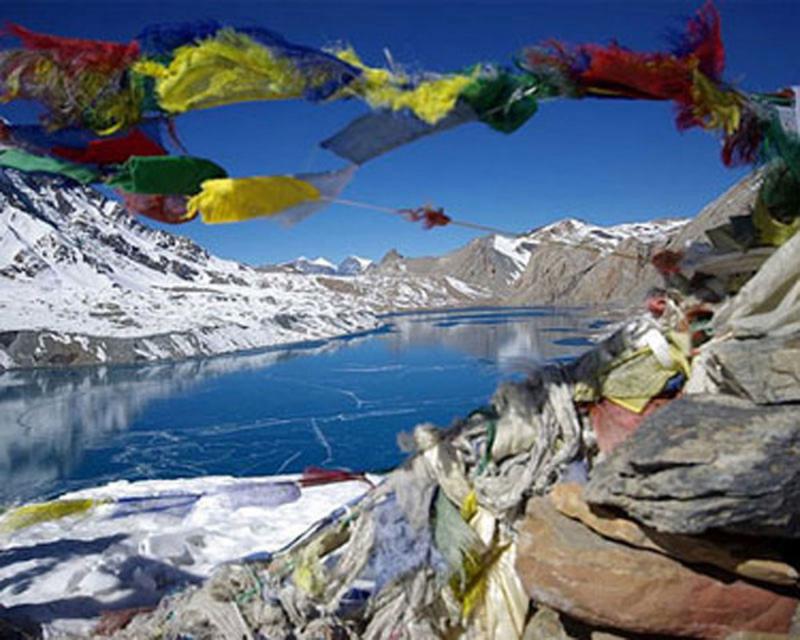

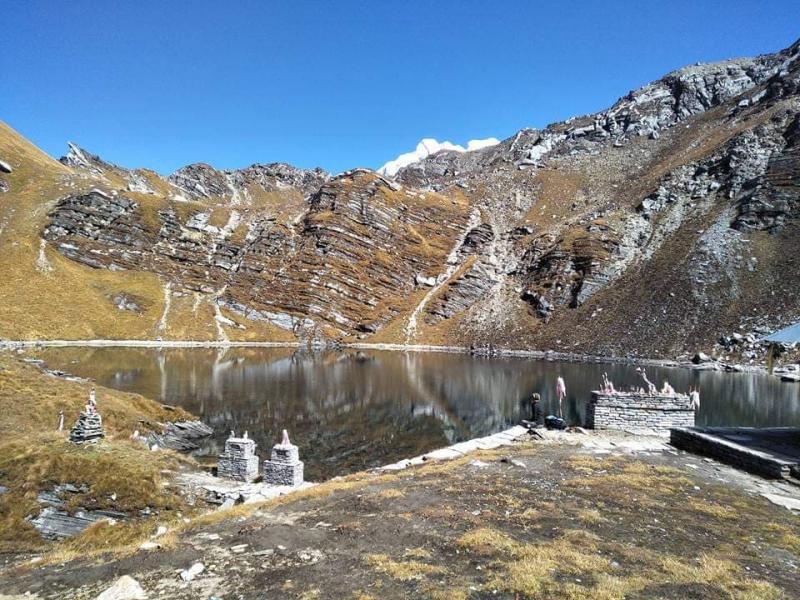
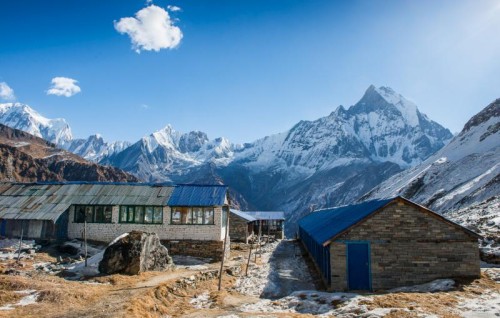


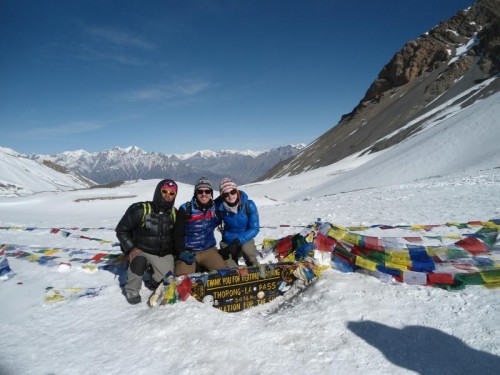
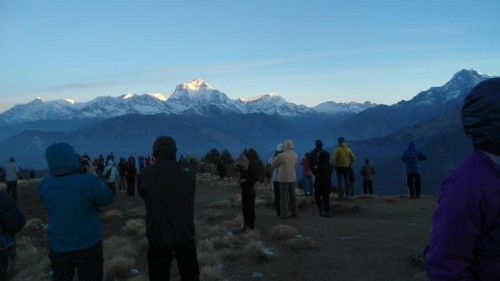
 USD 400
USD 400.jpg)

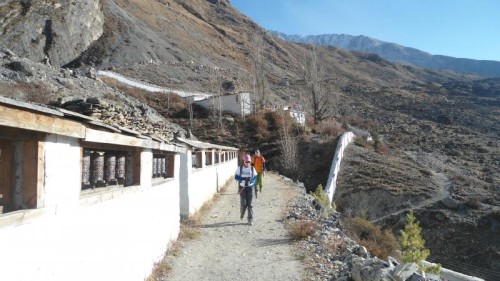
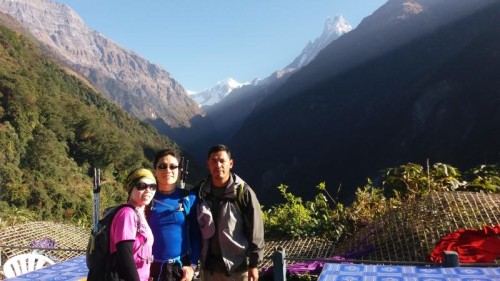

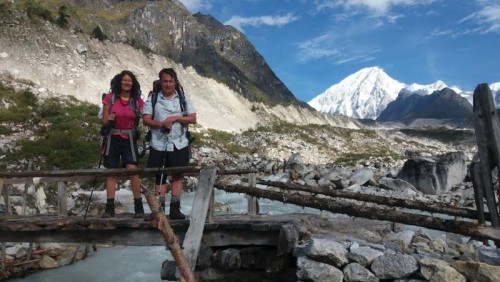
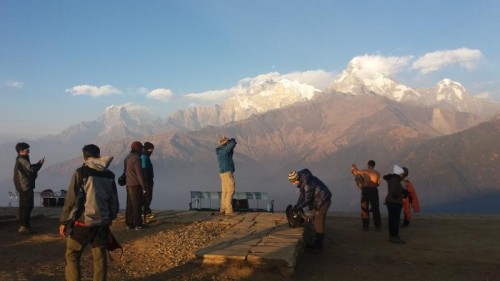
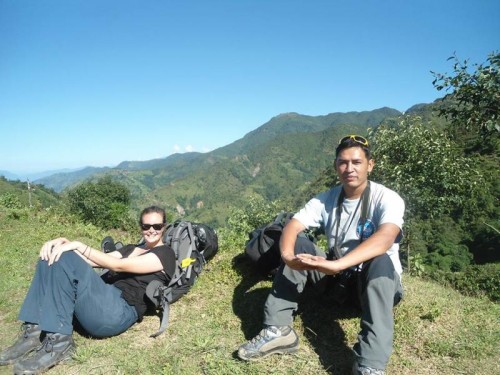
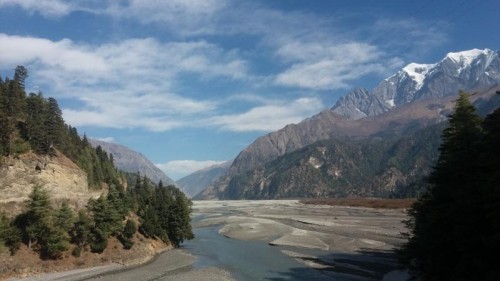
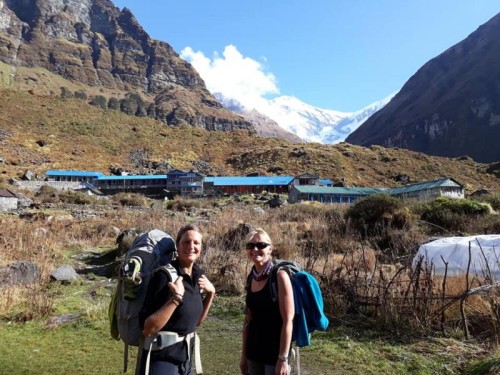
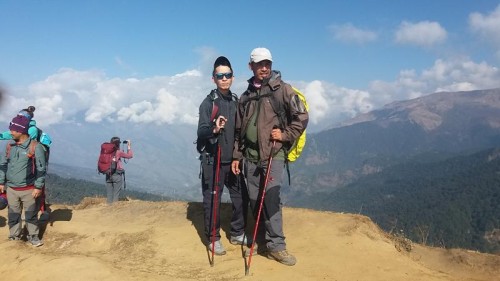
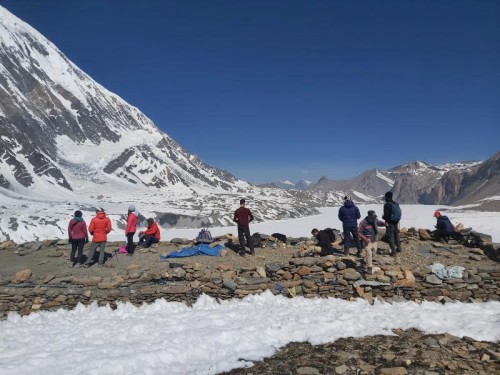

Jhon and son
Australia
Best trek ever in Khayer lake trek
18th June, 2023
My Son and I have just returned from a superb trek to the Khayer lake trek region of Annapurna, customized for us by the High Pass Adventure team. This is the second time I’ve trekked now with High Pass Adventure and as with previous experiences everything was handled meticulously and flawlessly.